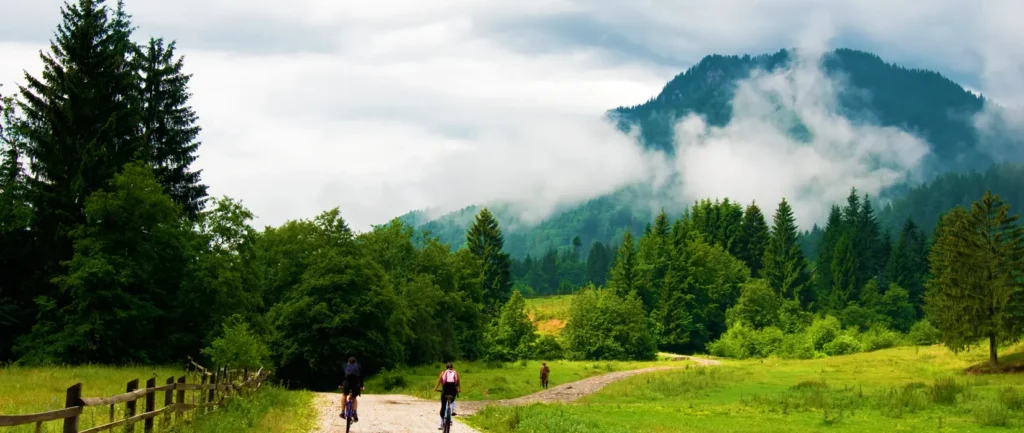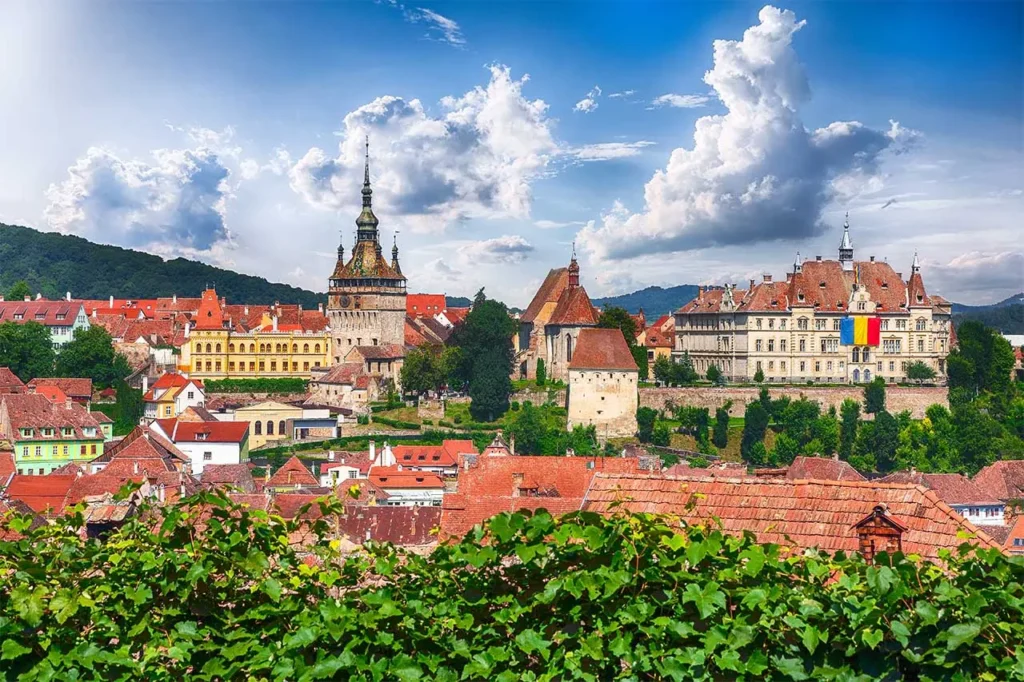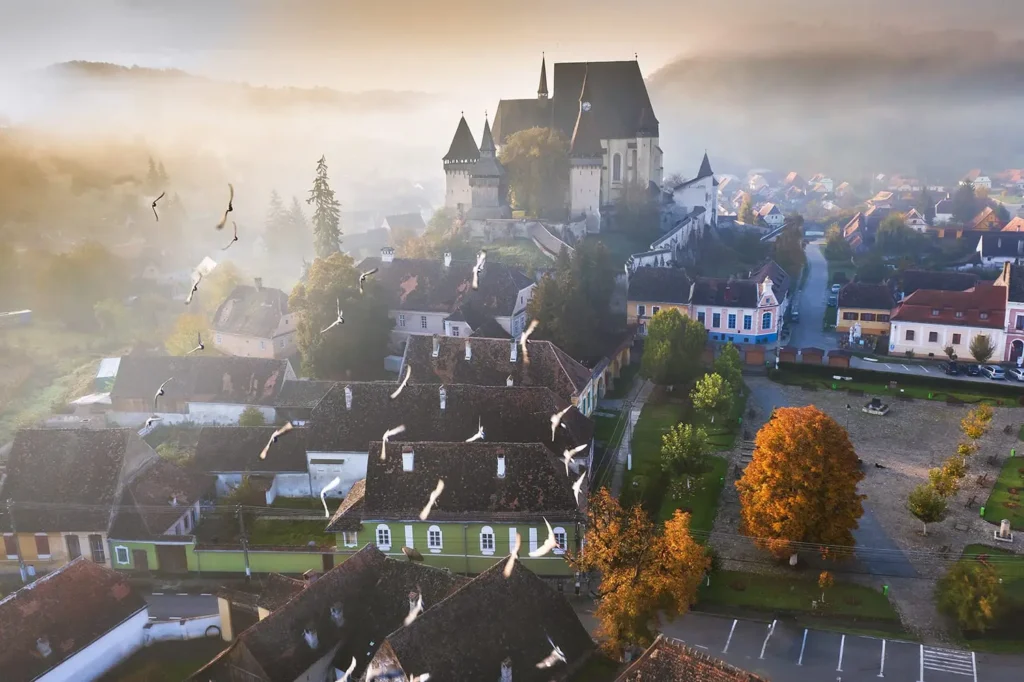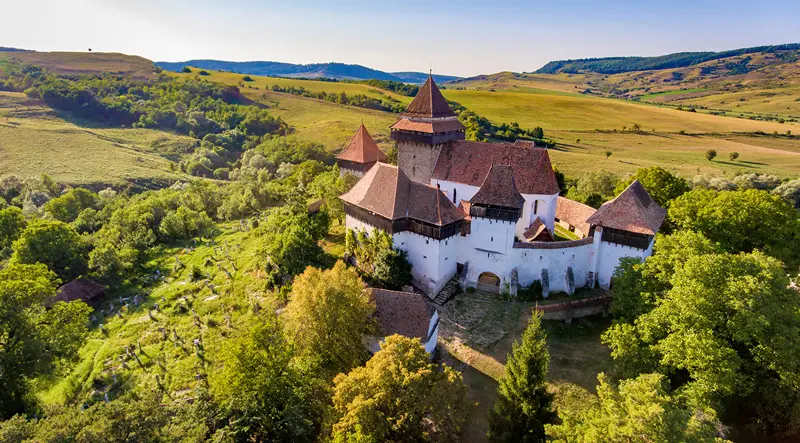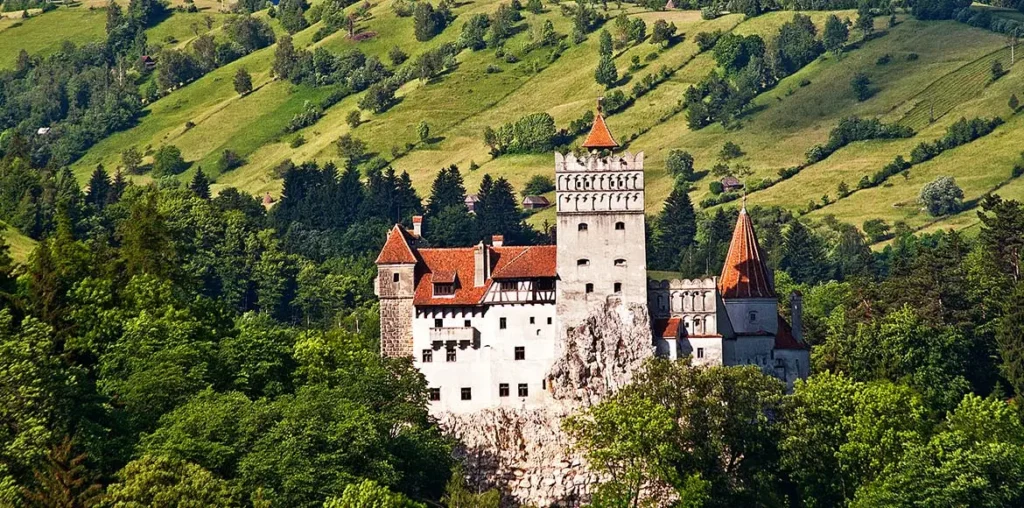Chapters
The construction of the first fortified churches of Transylvania began in the 12th century when the Kings of Hungary sent German colonists to settle in these lands. And despite living in an area that was widely populated by Romanians and Hungarians, the Saxons managed to preserve their language and culture intact. With support from the Kingdom of Hungary, the Saxons quickly began to thrive in the area, creating strong communities of farmers, artisans, and merchants.
But with villages rapidly developing and with the wealth and resources piling up, they became the targets of the Tatars and Ottoman Empire during the Middle Ages. And in order to protect themselves and their goods, the inhabitants started fortifying their villages. The most important towns were fully fortified, while the smaller ones were built around the church, where they added defensive buildings and storehouses that will help them withstand prolonged sieges.
The fortifications varied in size and style, ranging from simply turning a church tower into an observation tower to constructing a fortress surrounded by numerous rows of walls and guarded by defensive towers and gates. The churches were the perfect choice for the fortifications, as they were usually placed in the middle of the village, on top of a hill.
The only buildings placed close to the church were those of communal use, such as the school or the village hall, and the village square. The square was the heart of the village’s social life, and it was usually surrounded by the houses of the wealthiest villagers, as well as by the grain barns.
Originally, the region was home to more than 300 fortified churches of Transylvania that were scattered throughout its villages. Today, only half of the initial churches still stand, and only 7 of them are included in the list of UNESCO World Heritage Sites.
1. Biertan Fortified Church, one of the most popular fortified churches of Transylvania
Perhaps the most famous of all the fortified churches in Transylvania is Biertan. Located 80 km away from Sibiu, the village is believed to have been founded sometime between 1224 and 1283. The settlement quickly became an important market town, and by the early 16th century, it was home to more than 5,000 people.
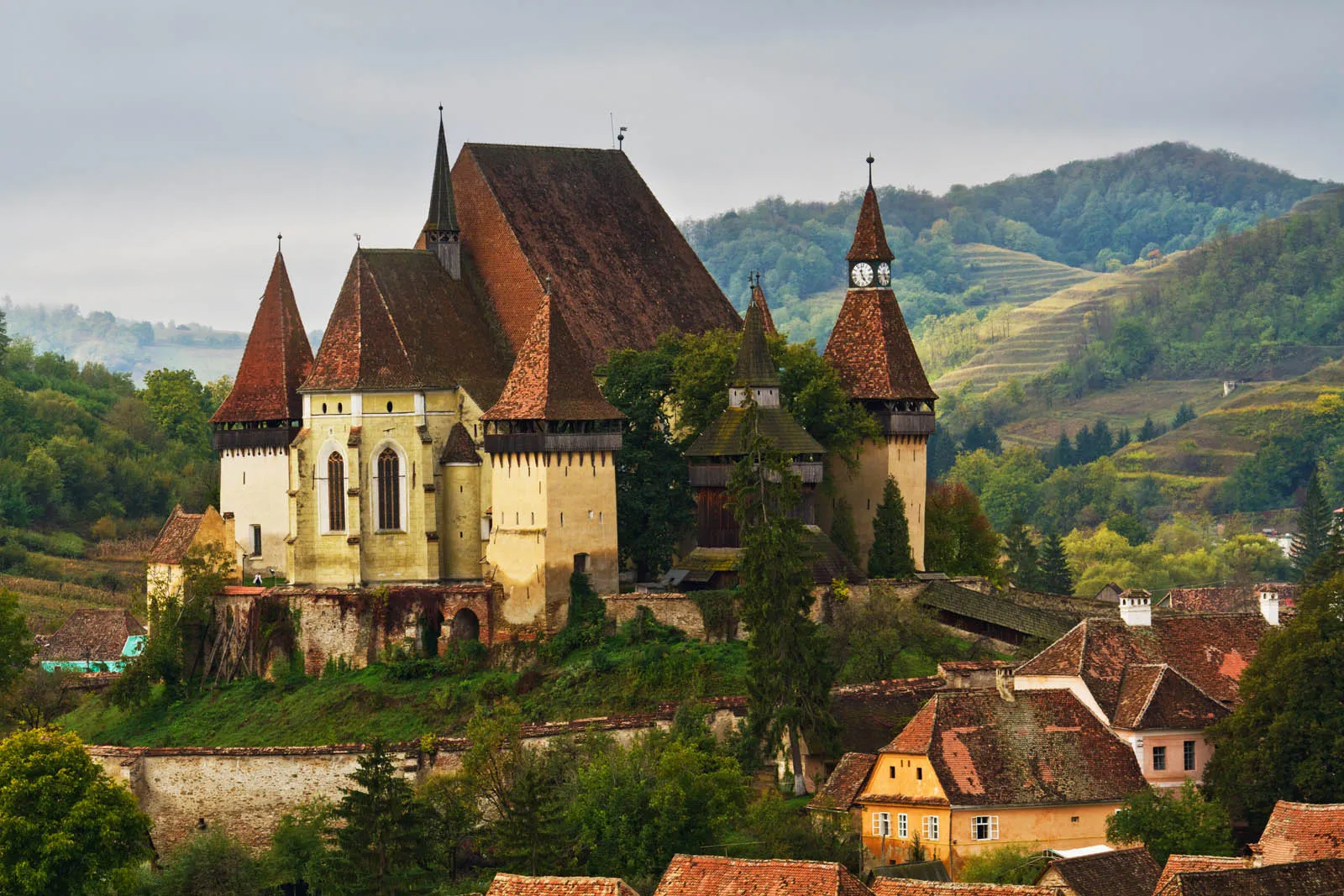
Biertan Fortified Church
The Biertan Fortified Church was built between 1486 and 1524, and it is surrounded by three rows of walls linked through nine gate towers. The clock tower of the church also serves as a gate for the inner fortifications, and it is four stories high and surrounded by a wooden battlement.
The area is also home to a “matrimonial prison”, where couples that wished to divorce were locked for two weeks, and they had to share a bed, a plate, and a spoon. It is said that in the three centuries of its activity, only one couple divorced after staying in the prison.
In 1993, Biertan was the first fortified church of Transylvania to be inscribed in UNESCO’s list of World Heritage Sites, and the other 6 were added to the list in 1999, which is officially known as the Villages with fortified churches in Transylvania.
Ever since 1990, numerous Saxons come to Biertan each year to celebrate their heritage.
2. Câlnic Citadel
The Câlnic Citadel was built by the Kelling noble family in the late 13th century, but frequent Ottoman raids led to the keep being fortified and surrounded by a massive wall and a water-filled moat. Despite fortifying the citadel, the noble family ended up selling it to the local Saxon community in 1430.
The fortifications of the citadel were then extended by surrounding it with a second wall, and by building a tower on the south side that was used as a refuge during enemy raids. After the second wall was completed, two more levels were added to the keep, so that the defenders could fire their weapons outside the walls.
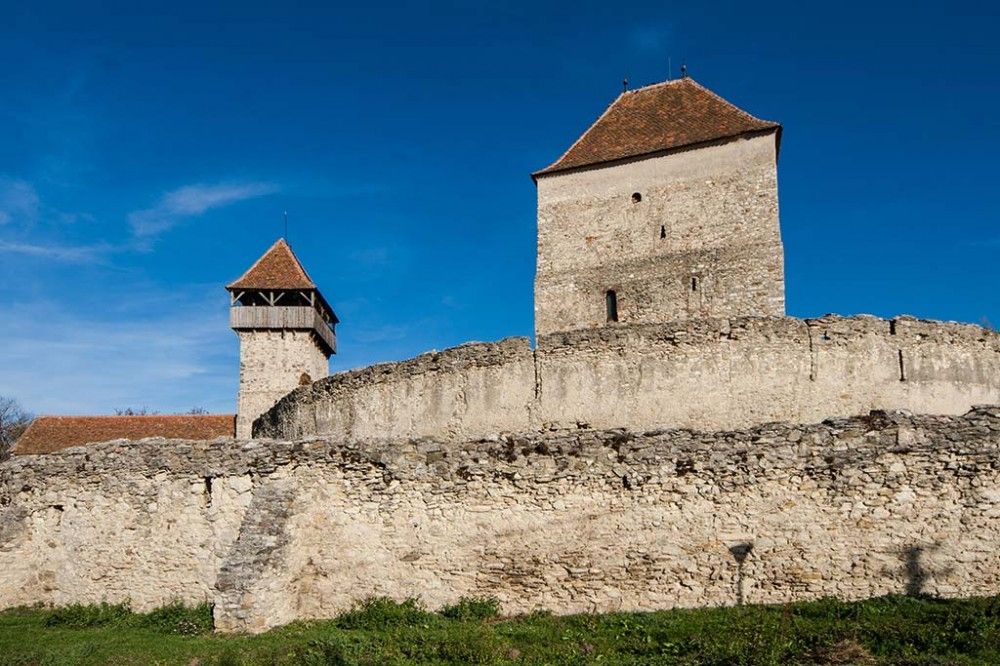
Câlnic Citadel
The village was of Câlnic was eventually raided and destroyed in the late 17th century by the Ottomans, but the invaders failed to take the castle.
Nowadays, the castle is home to an International Cultural Centre, and one of its towers hosts a museum where you can discover the lifestyle and traditions of the local Saxons.
3. Dârjiu Fortified Church
The Dârjiu church was initially built between the 14th and 15th centuries in a Romanesque style, but at the end of the 15th century, it was transformed into a Gothic church. Its fortifications – a squared 5-meter wall defended by a bastion in each corner – were erected in 1400 and completed in 1530.
One of the best-preserved towers is the gate tower, which remained in its original form, and still has the openings for firing guns that can be closed with wooden shutters.
But despite its imposing aspect, the beautiful church is also an important monument of art. The interior of the church features some valuable mural paintings executed by Paul of Ung in 1419.
4. Prejmer Fortified Church
Dedicated to “The Holy Cross”, the Prejmer church was built on a Greek cross plan and modified in the early 16th century by adding two side naves and extending the main one.
The Prejmer Fortress was sieged dozens of times, and even though the village was destroyed more than 50 times, the church was rarely conquered. The pride of the fortresses’ defense system was its “organ of death”, an ingenious device that would apply continuous fire on the attackers of the fortress.
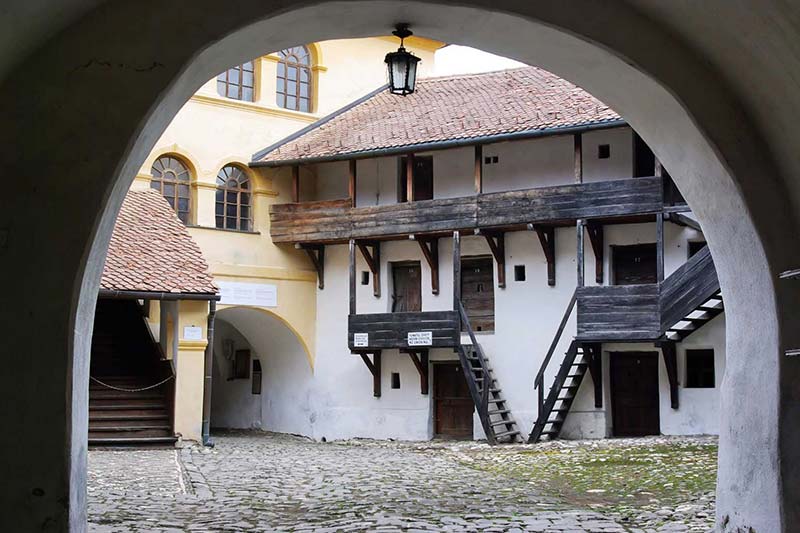
Inside Prejmer Fortress
As it was oftentimes sieged, the fortress was altered several times, but it was restored to its original form between 1960 and 1970, and the site now serves as a museum.
5. Saschiz Fortified Church
The construction of the Saschiz church began in the late 15th century, and the main structure was completed in only 3 years. Its main hall is strengthened with 22 buttresses, and its choir is surrounded by a defensive level made of bricks.
From the beginning, the church was planned and built as a defense outpost against the invading Ottoman forces. The whole religious site was surrounded by a strong defensive wall, but today, the only surviving portion is the northern defense tower.
6. Valea Viilor Fortified Church
The construction of the Valea Viilor church began in the 14th century, but evidence suggests that previously in the village there was another church, built in a Romanesque style.
In the early 16th century, the church underwent numerous modifications that helped fortify it. Defense towers were added in the north and south entrances, a defensive level with parapets was added on top of the nave, and the choir was rebuilt as a three-story defensive tower.
7. Viscri Fortified Church
Viscri is known as the village that conquered the heart of Prince Charles. In 2006, after visiting the village, he bought and restored two traditional Saxon houses in order to protect the unique way of life and to promote sustainable tourism. Today, the buildings serve as guesthouses for tourists, and they remain in touch with the surrounding architecture.
The church in Viscri was built in the 13th century by the Saxons of Transylvania, and it integrated an older wooden chapel. In the 15th century, the church was fortified, with the main hall being extended and linked to the keep.
Due to the peaceful times, many of the fortifications were taken down throughout the 17th century, but they were restored together with the church in 1970, and it was included in the UNESCO Patrimony in 1990.
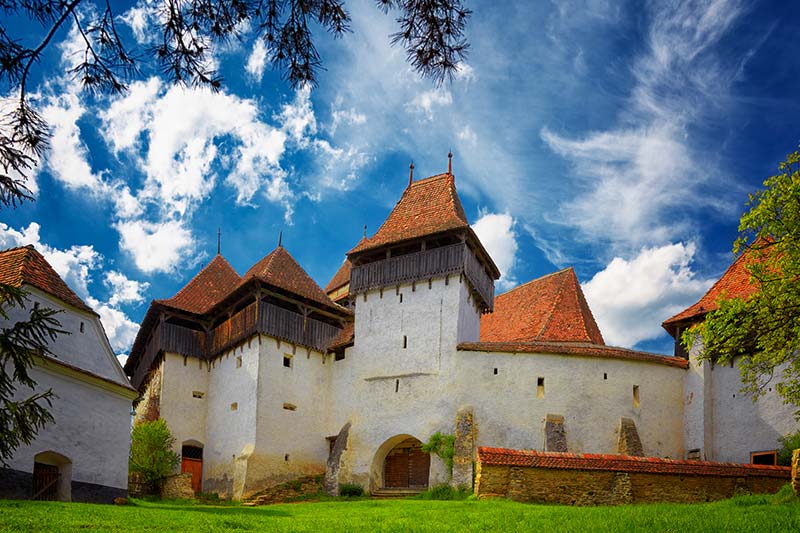
Viscri Fortified Church
The fortified churches of Transylvania are some of the most iconic landmarks of this historical region, and they serve as a testimony to the troubled history of these lands. But, if you want to enjoy a more authentic rural experience, we strongly recommend ditching the more popular Saxon villages such as Biertan and Viscri, and head to the lesser-known ones such as Moșna, Ațel, Mălâncrav, Dârjiu, or Cârța.
Although some of these villages and their fortified churches may be in a worse condition, they can still be explored. Visiting with a private guide is by far the easiest way, as you won’t have to worry about routes and schedules, but visiting them by yourself is also possible.
Most of the churches have a poster with a phone number at the entrance that will help you get in touch with someone who can unlock the church gates for you. Usually, if you want to go inside, you will have to buy a ticket or leave some money for the church – around 3 euros.


